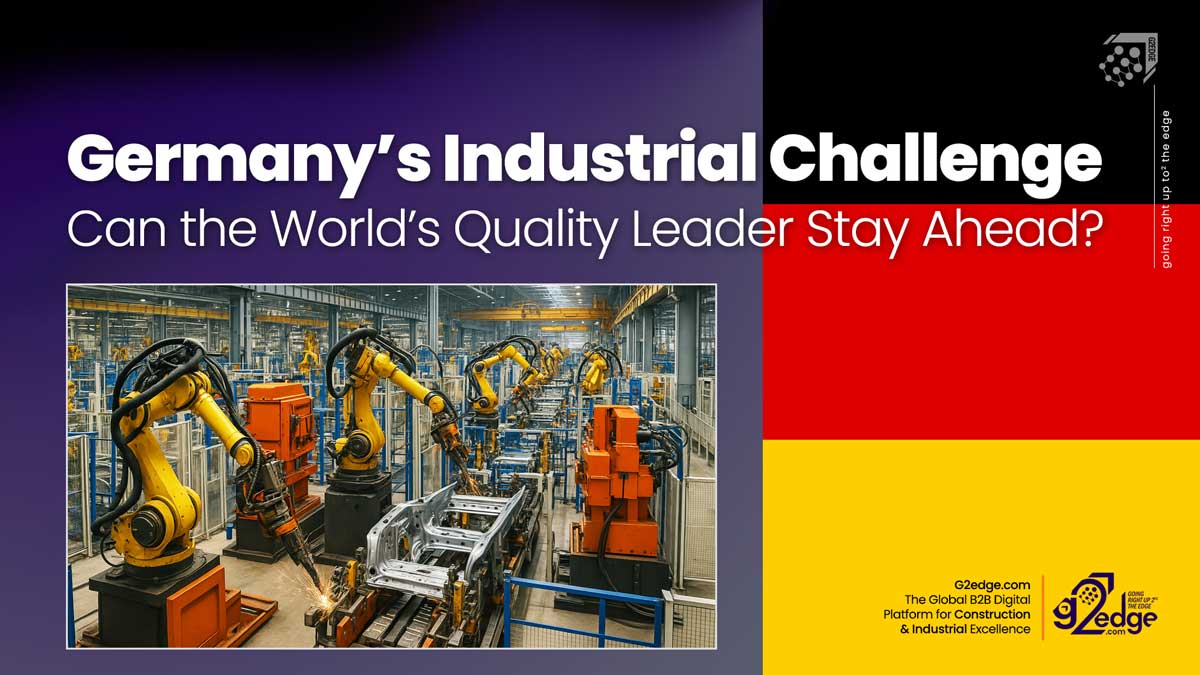
Germany has always been Europe’s industrial powerhouse — home to global giants like BMW,
Mercedes-Benz, Siemens, and Bosch. But in recent years, its manufacturing engine has slowed.
What’s really happening inside Europe’s economic core?
Understanding the Slowdown
Germany remains a world leader in engineering excellence and precision manufacturing.
However, the share of manufacturing in its economy has gradually declined over the last two decades due to
rising costs, energy challenges, and fierce global competition.
The slowdown reflects both long-term structural shifts and recent external shocks — from the pandemic
to the 2022 energy crisis.
Five Major Shocks That Reshaped Industry
- COVID-19 disrupted supply chains and halted production lines.
- Energy crisis hit heavy industries like steel and chemicals.
- EV transition forced major reinvestment across the auto sector.
- Global competition from China and the U.S. intensified.
- Automation lag left some firms behind in AI and digitalization.
New Competitive Landscape
Today, the U.S. attracts industries with low-cost energy and subsidies,
China dominates batteries and EVs, while Eastern Europe and Turkey
rise with lower costs and proximity to EU markets.
Germany still stands for quality — its strength lies in precision, automation, and trusted engineering.
Resilience and Recovery in 2025
In 2025, optimism is returning. Energy prices have eased, and investment is rising in
batteries, semiconductors, and renewable technologies.
Germany’s focus is shifting from scale to smart, efficient production
driven by automation and AI.
Vision for 2030 — Leaner, Greener, Digital
- Auto manufacturing will be fully electric.
- Heavy industries will adopt hydrogen and clean energy systems.
- Machinery and production lines will be driven by AI and robotics.
Growth may be moderate, but it will be smarter and more sustainable — powered by innovation,
not just output.
Transformation, Not Decline
Germany’s story isn’t one of deindustrialization — it’s evolution.
Low-value production may move abroad, but high-value, digital, and precision work remains strong at home.
Germany is shifting from mass production to smart, value-driven manufacturing.
Lessons for Other Economies
- Automate early and continuously improve processes.
- Invest in energy efficiency and sustainable systems.
- Integrate AI into planning, quality, and logistics.
- Diversify suppliers across regional hubs.
- Prioritize workforce training — skilled labor is the foundation of success.
The Future of German Manufacturing
Germany isn’t fading — it’s retooling.
From Stuttgart to Hamburg, factories are blending craftsmanship with digital intelligence.
The next chapter belongs to those who modernize with purpose, combining engineering heritage
with innovation and sustainability.
Germany’s transformation is proof that industrial excellence can evolve —
not by abandoning its roots, but by reinventing them for a smarter, cleaner future.